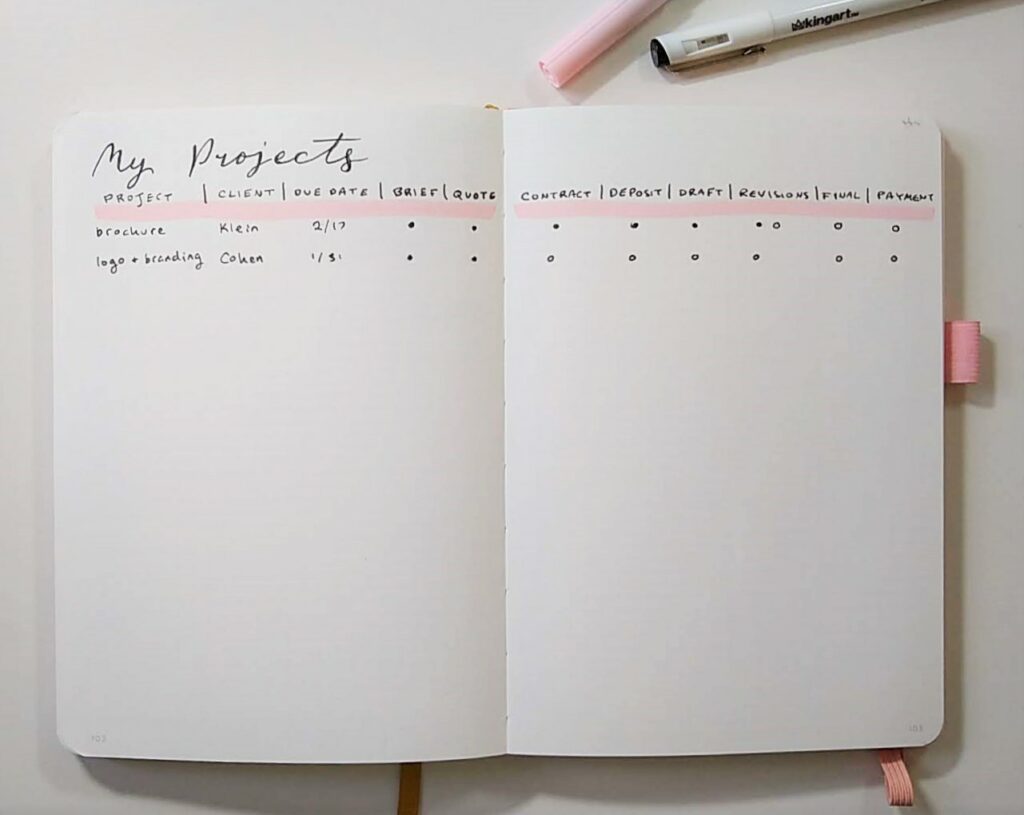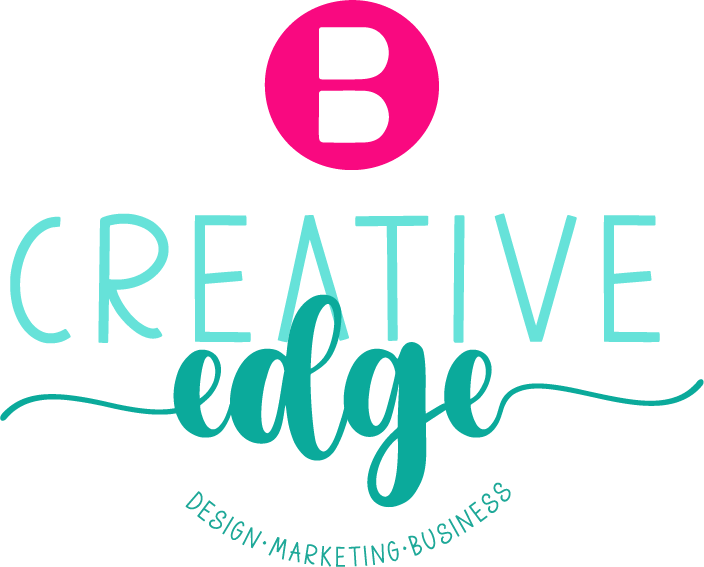
Hi everyone, my name is Rena. I’m a surface pattern designer from Jackson, NJ. Three years ago, I started using the bullet journal system to plan my day. I found it to be so helpful when it comes to managing creative projects, to the point where I can’t imagine using a different planning system.
What is a bullet journal?
A bullet journal is a notebook where you keep track of your notes, tasks, appointments, and the like. It’s like a planner, but you start with a blank notebook, which you customize to fit your needs. As your life changes and different projects come up, your bullet journal adapts with you.
The main pages of a bullet journal include monthly and weekly logs. This is where you plan and organize your to-do lists. Beyond that, you can add pages for managing projects, household, or any other aspect of your life.
All you need to get started with bullet journaling is a notebook and a pen. I recommend a notebook with dotted grid paper. That makes it really easy to split a page into sections. You can, of course, use more supplies, but that’s up to you.
Why is it perfect for creatives?
- As creatives, we have our own way of doing things. We like to have the option to color outside the lines, so to speak. The bullet journal system is totally customizable. You have the freedom to plan and keep track of the different parts of your life in whichever way works best for you.
- Bullet journaling is an analog system, which means it uses pen and paper. Using tactile tools can do wonders to help you be more creative. We all love our digital tools, and the ease and speed that they give us, but slowing things down improves your focus. It gives your creativity time to breathe and do its thing.
- We need a tool to keep us on track. Have you ever been working on one project that sparked a new idea in your mind and that sent your train of thought bouncing in a totally different direction? And the next thing you knew, you were on Pinterest, creating a mood board for your dream kitchen? (No? Does this just happen to me?) As creative people, we have lots of ideas, and often the fresh, shiny ones can distract us. Keeping a bullet journal holds your focus and reminds you what you are meant to be working on that day.
- A bullet journal is mainly a planning system, but you can add art journaling to it. You can decorate it with highlighters and scrapbook paper, use colorful sticky notes… The sky’s the limit. Being arty in your journal will feed your creative muscles, and also make your journal something you love to use.
How to keep track of multiple design projects in a bullet journal:
As creatives, we usually work on more than one project at once. Keeping track of each one can get overwhelming, especially if you’re trying to hold all that in your head.
Let’s break down how we can create a page in a bullet journal that tracks each project in a way that is visual and clear.
Each project we work on goes through certain stages. Generally, that would look something like: brief, draft, revision, deliver final files. Depending on what type of work you do, these stages might be a bit different.
Working on a project is not just about the design/web page/video that you’re creating. There is also the business side of things. That means keeping track of the due date, the deposit, and the final payment.
So how do we keep all these pieces organized?
First, make a list of the stages that you go through in each project. You can add steps that are not on my list, such as: creating mockups and adding to portfolio.
Then write each item across the page, creating a column for each stage. Leave a column for the project title and the name of the client.
Each time you start a project, fill in another line on the chart. Write the project title, the client name, the due date. For the other columns, simply create a circle. Each time that stage is finished, color the circle in. You can also use checkmarks or dots, but I find that filling in circles is super satisfying and neat. You can even put down more than one circle in a section if it’s something that happens more than once. For example, you may go through a few rounds of revisions. (Don’t we all love revisions, said no designer ever.)
Now you have a visual reference to look at when you get to your desk and you’re trying to remember where you are in each project!
If you’re interested in learning more about bullet journaling, check out my website: renasnook.com. I have a course on bullet journal basics, as well as a blog with additional bullet journaling and productivity tips.

